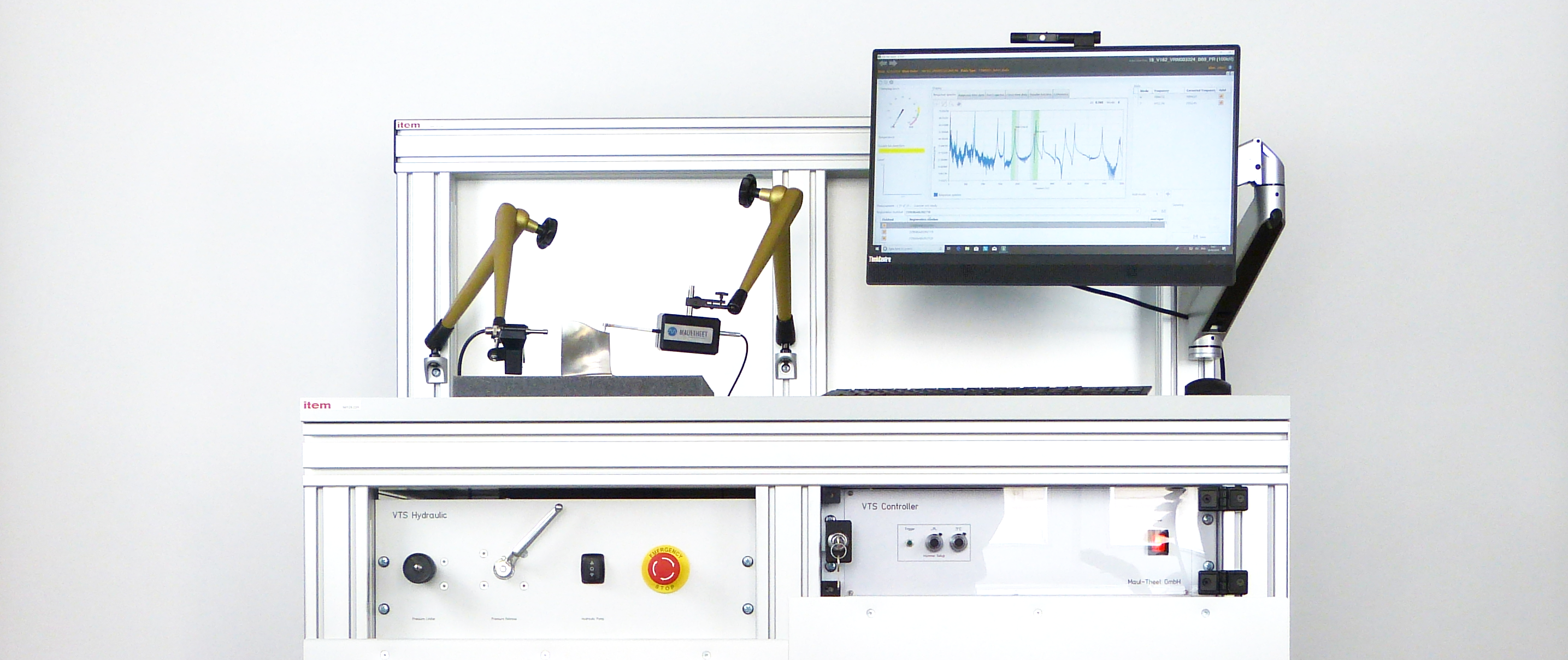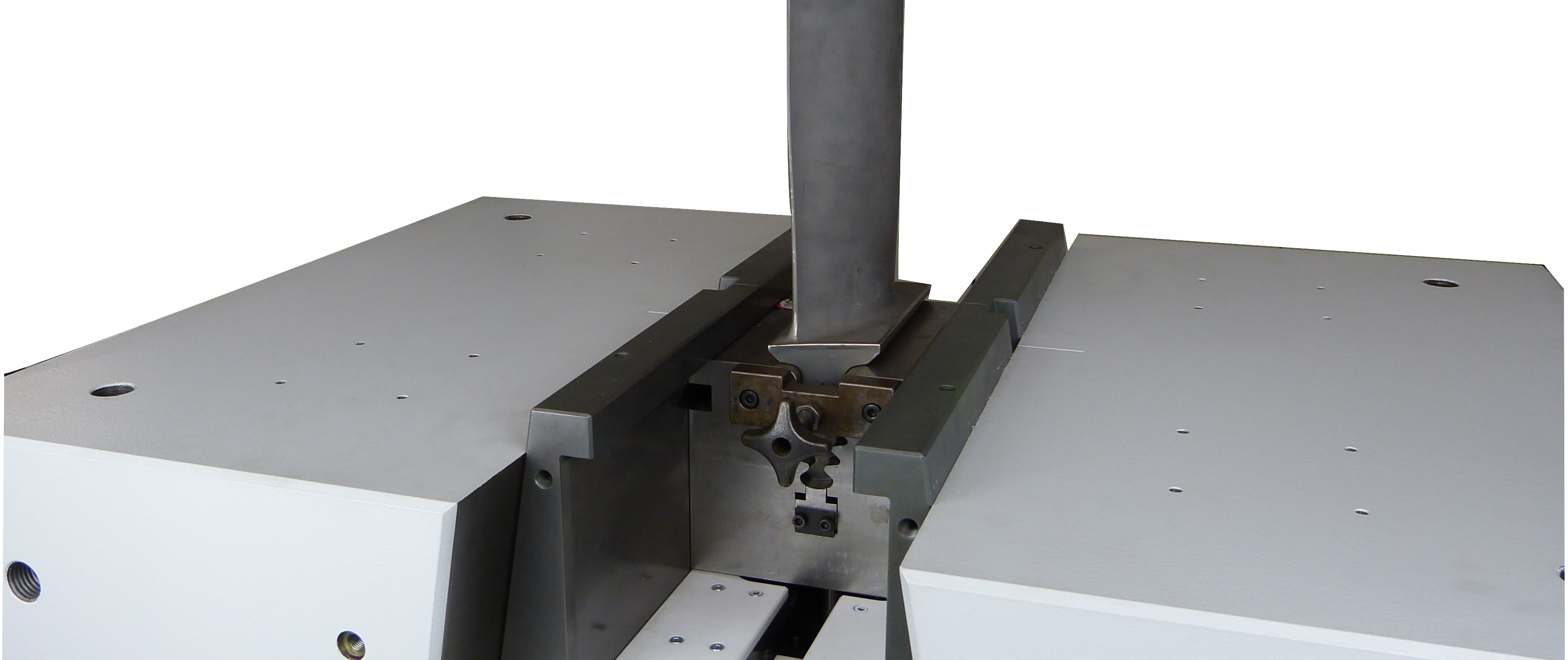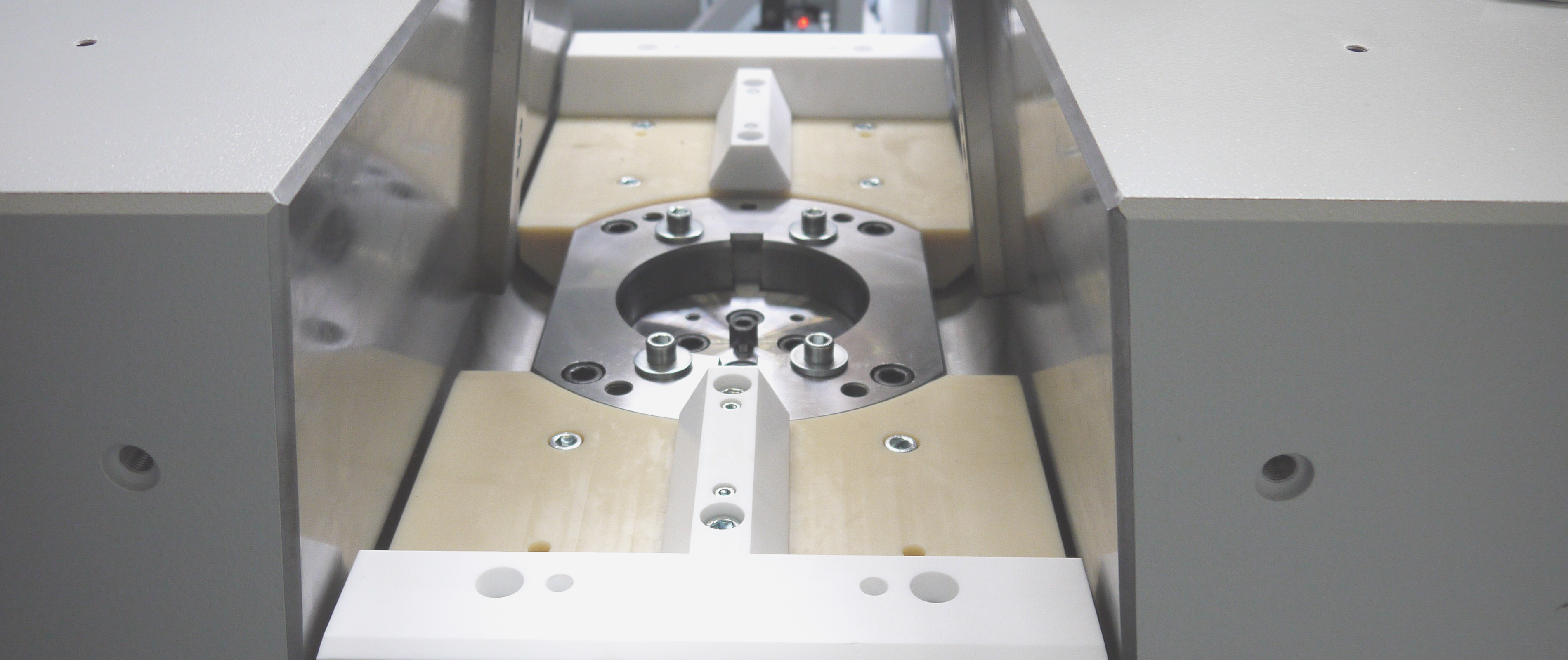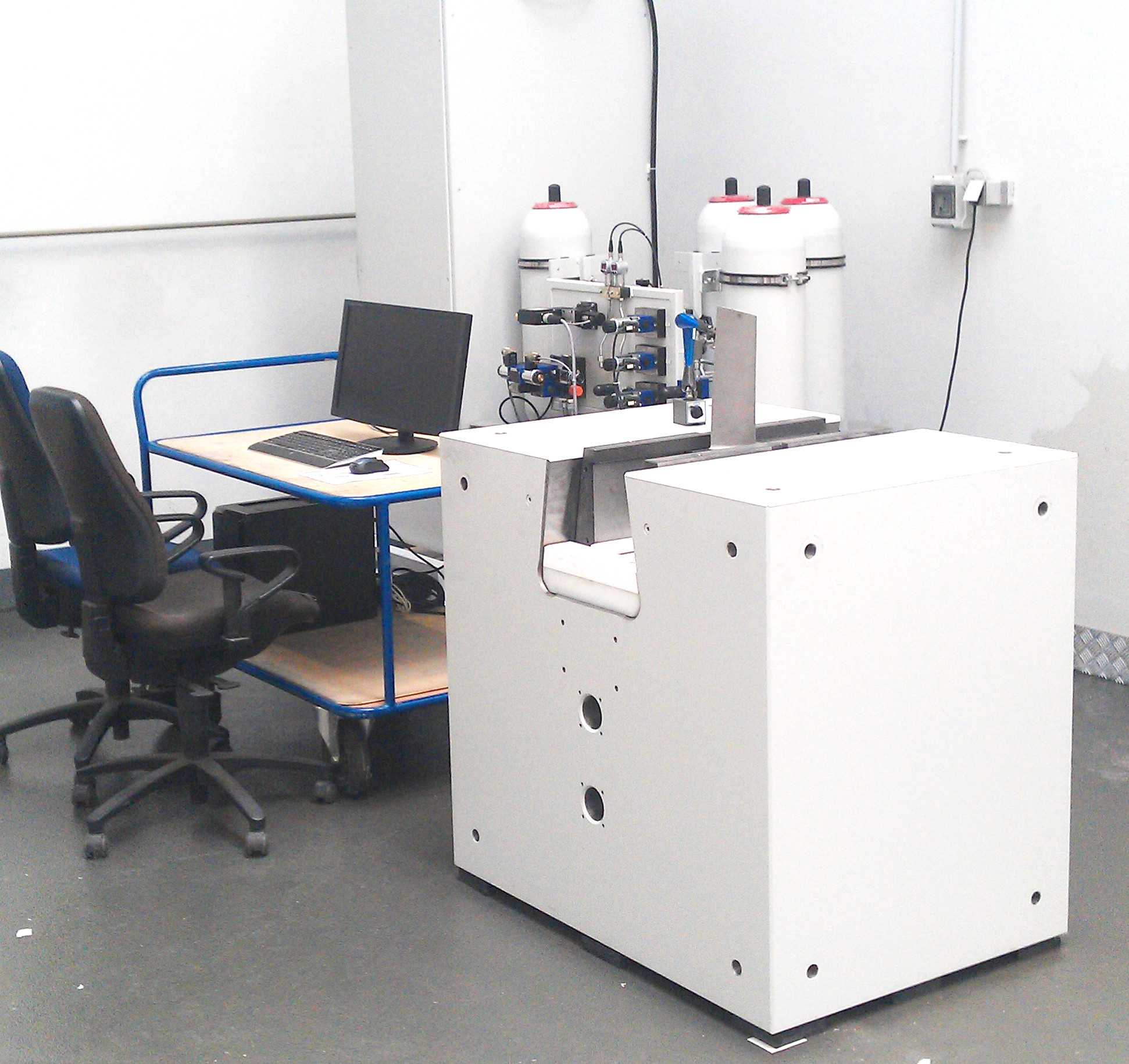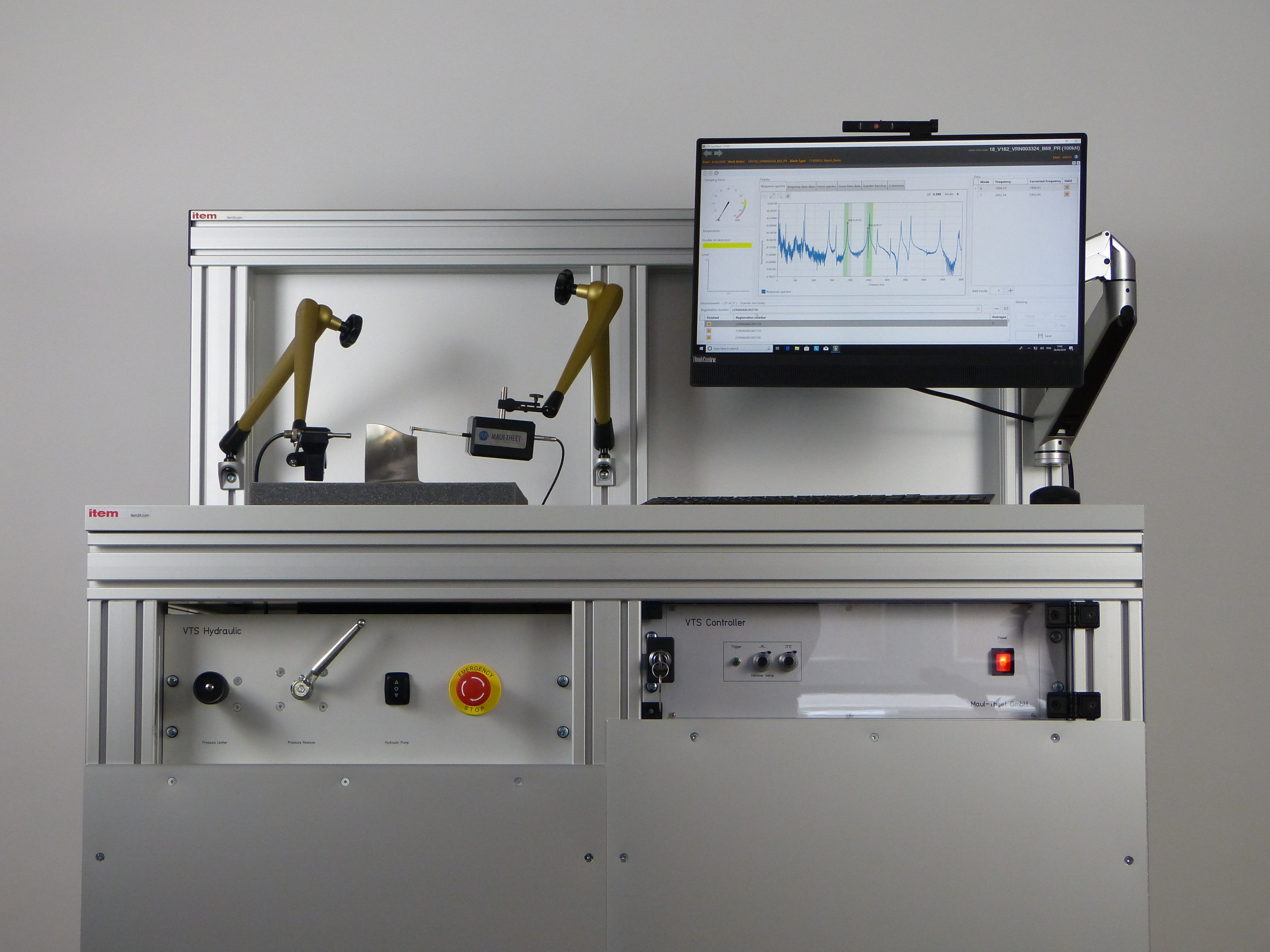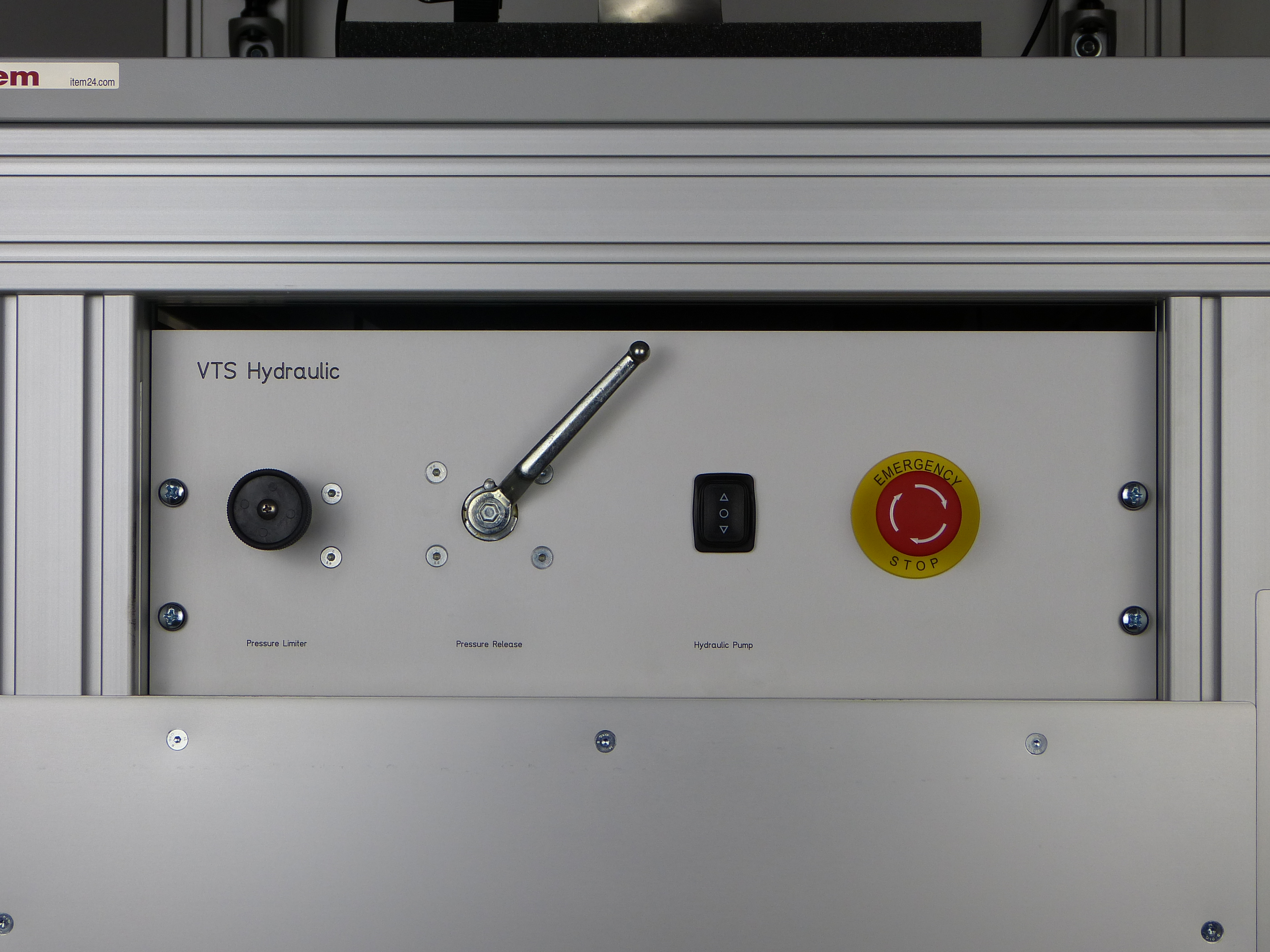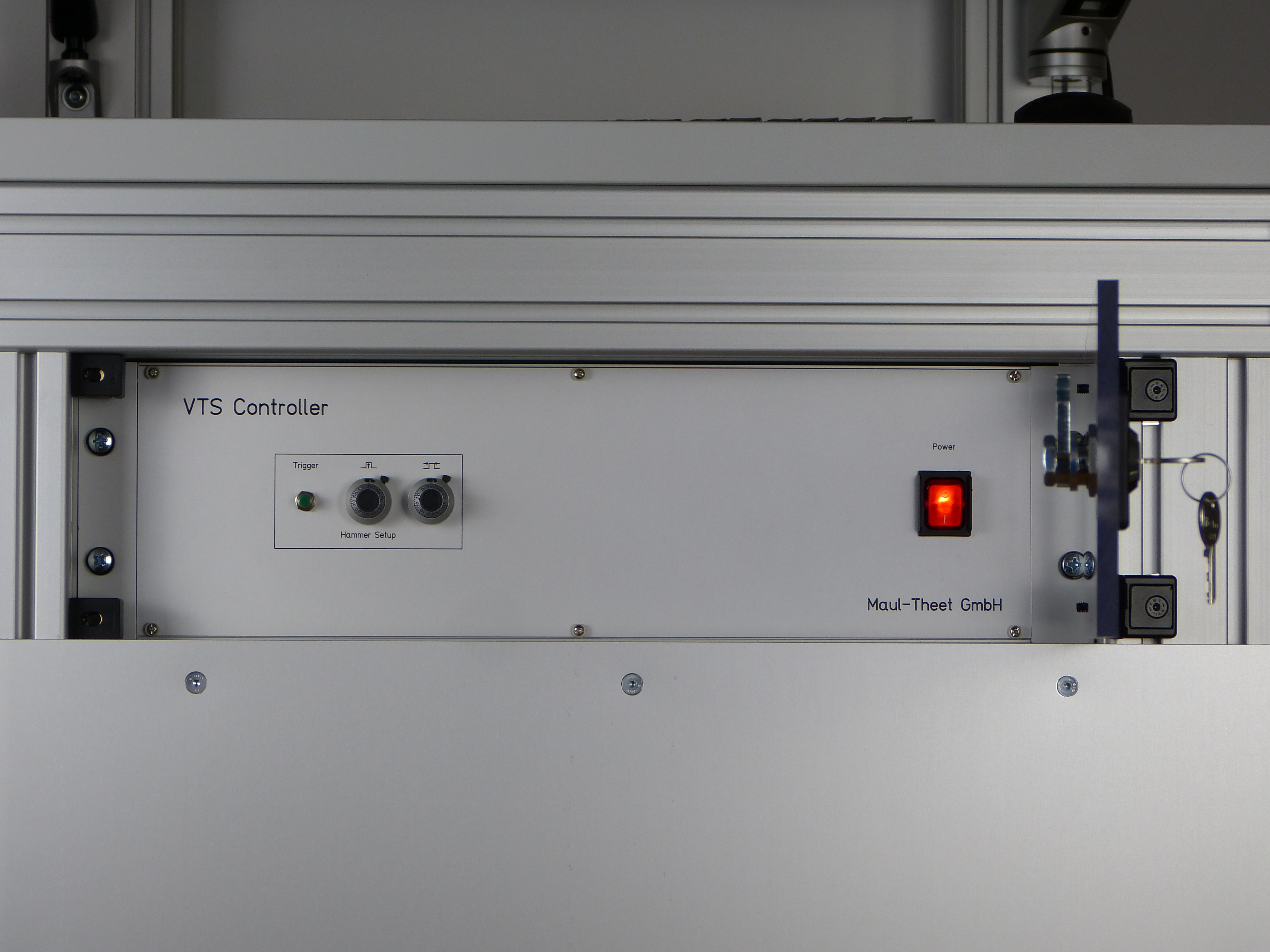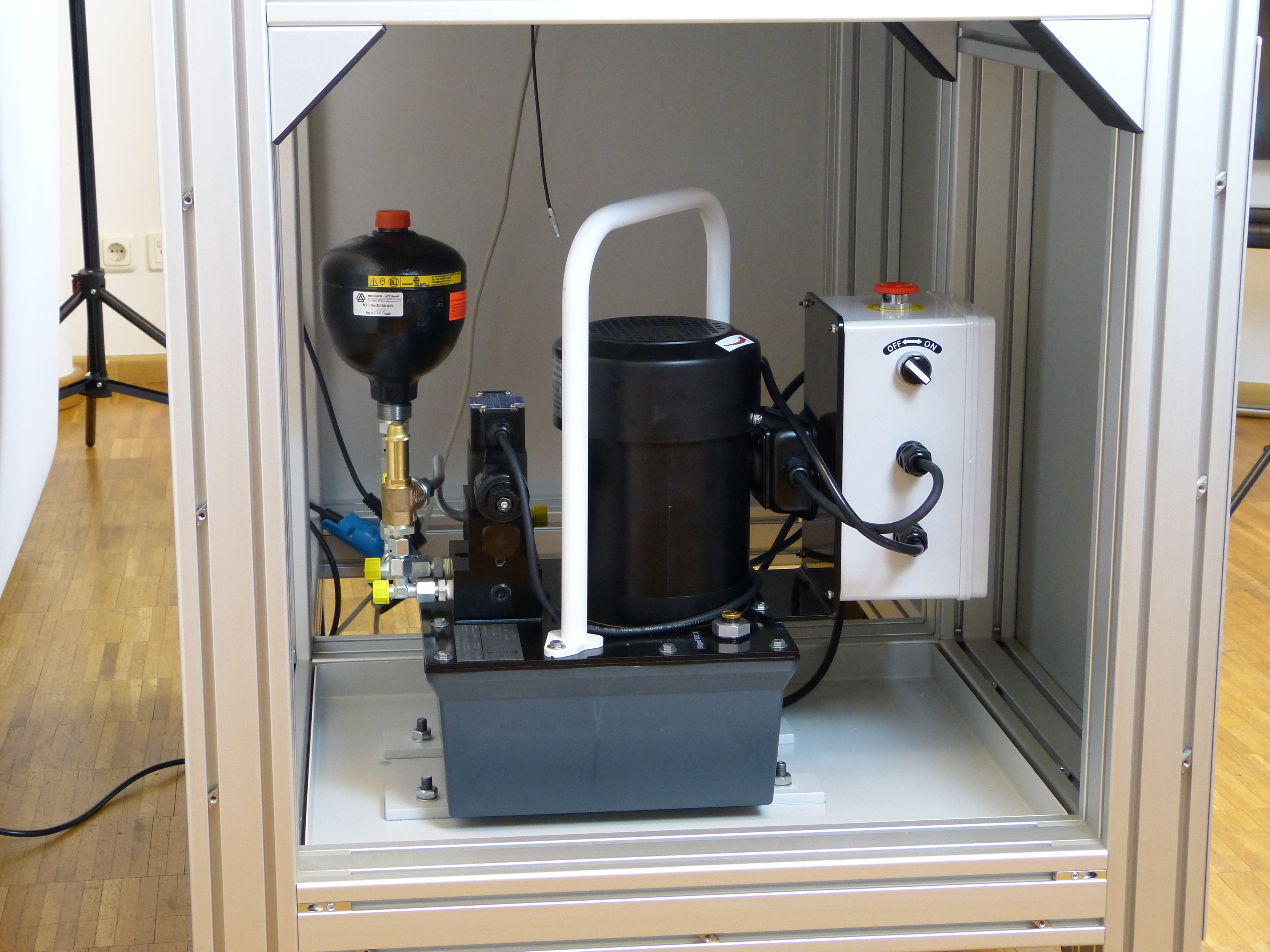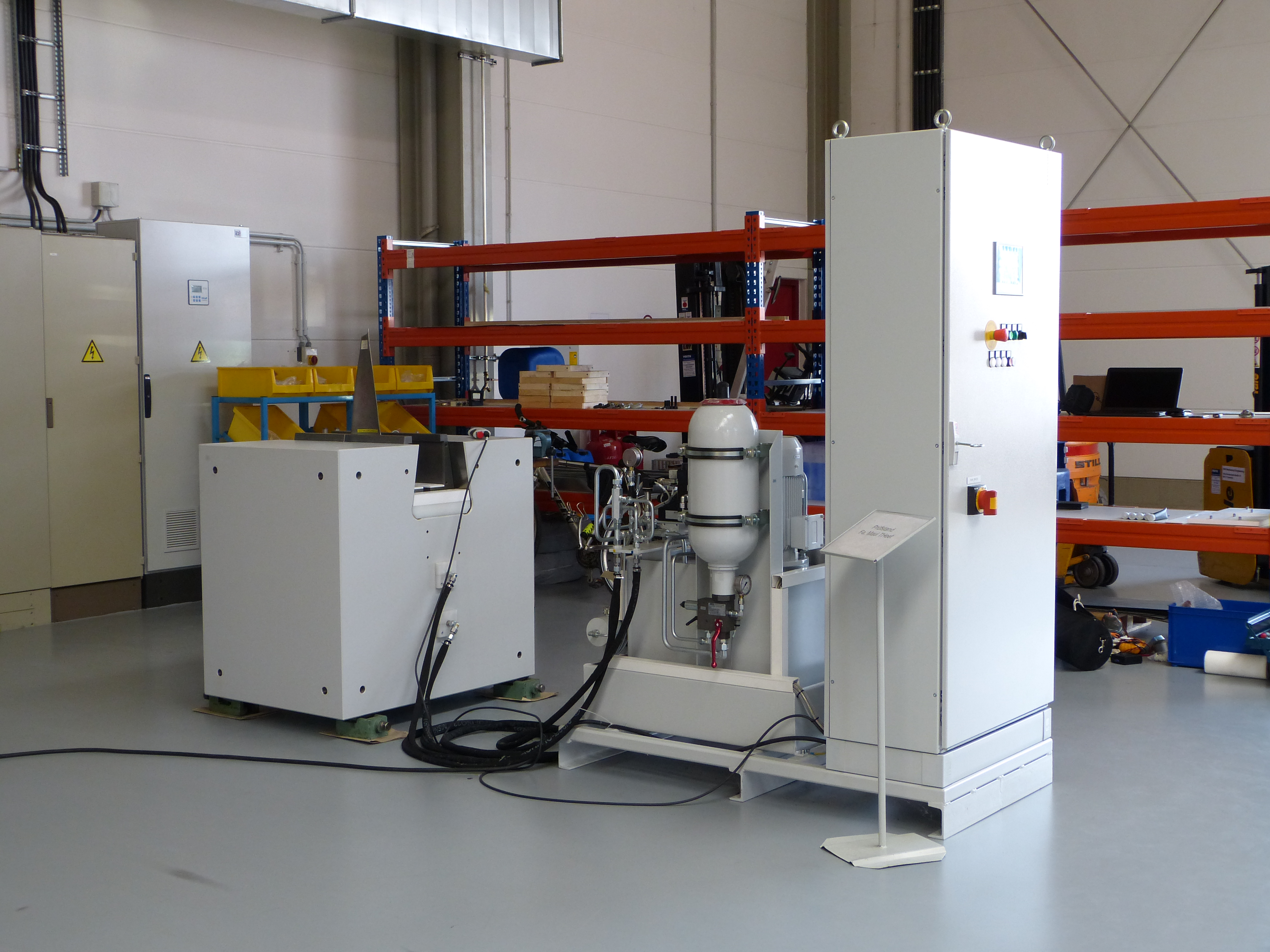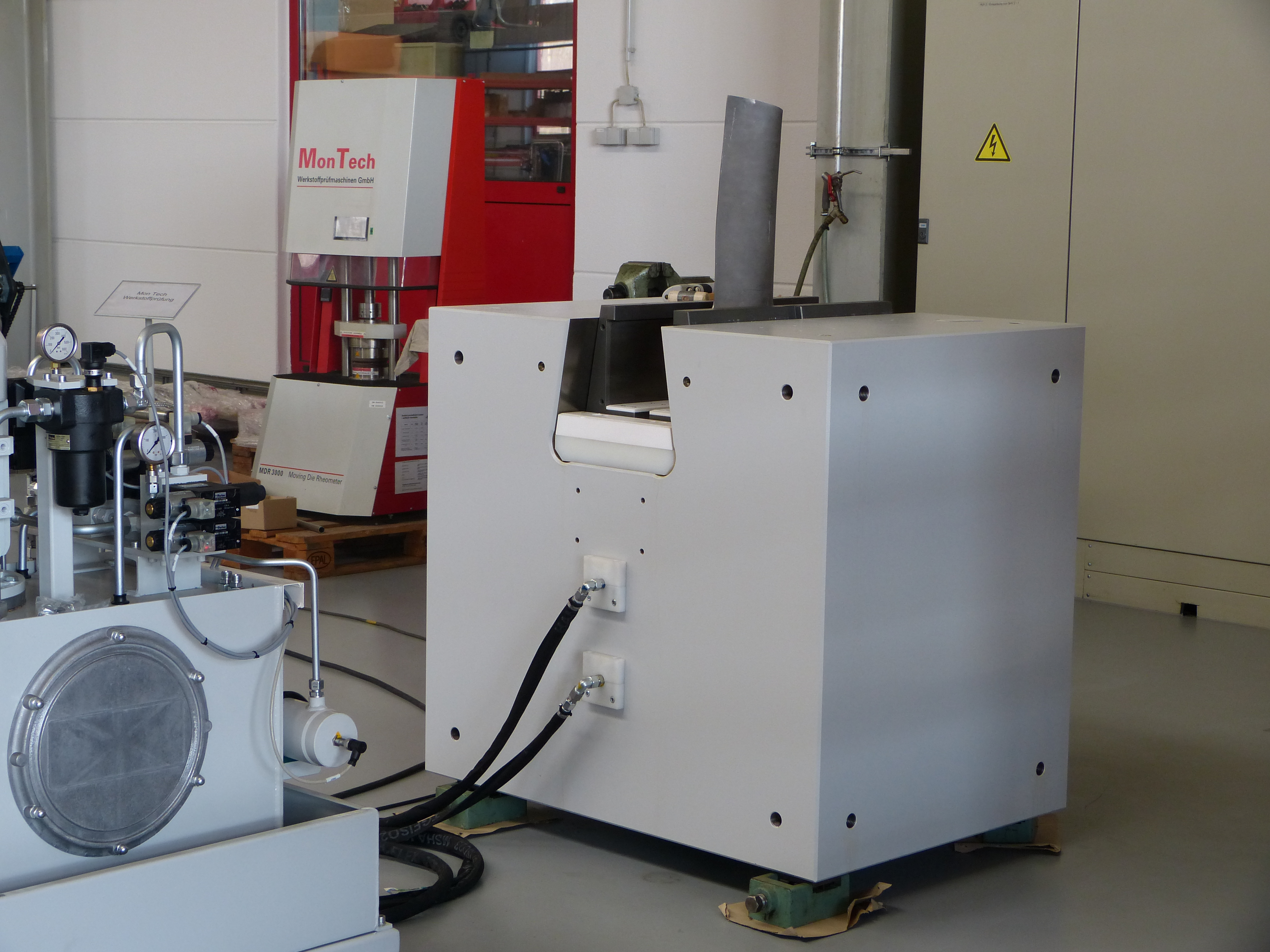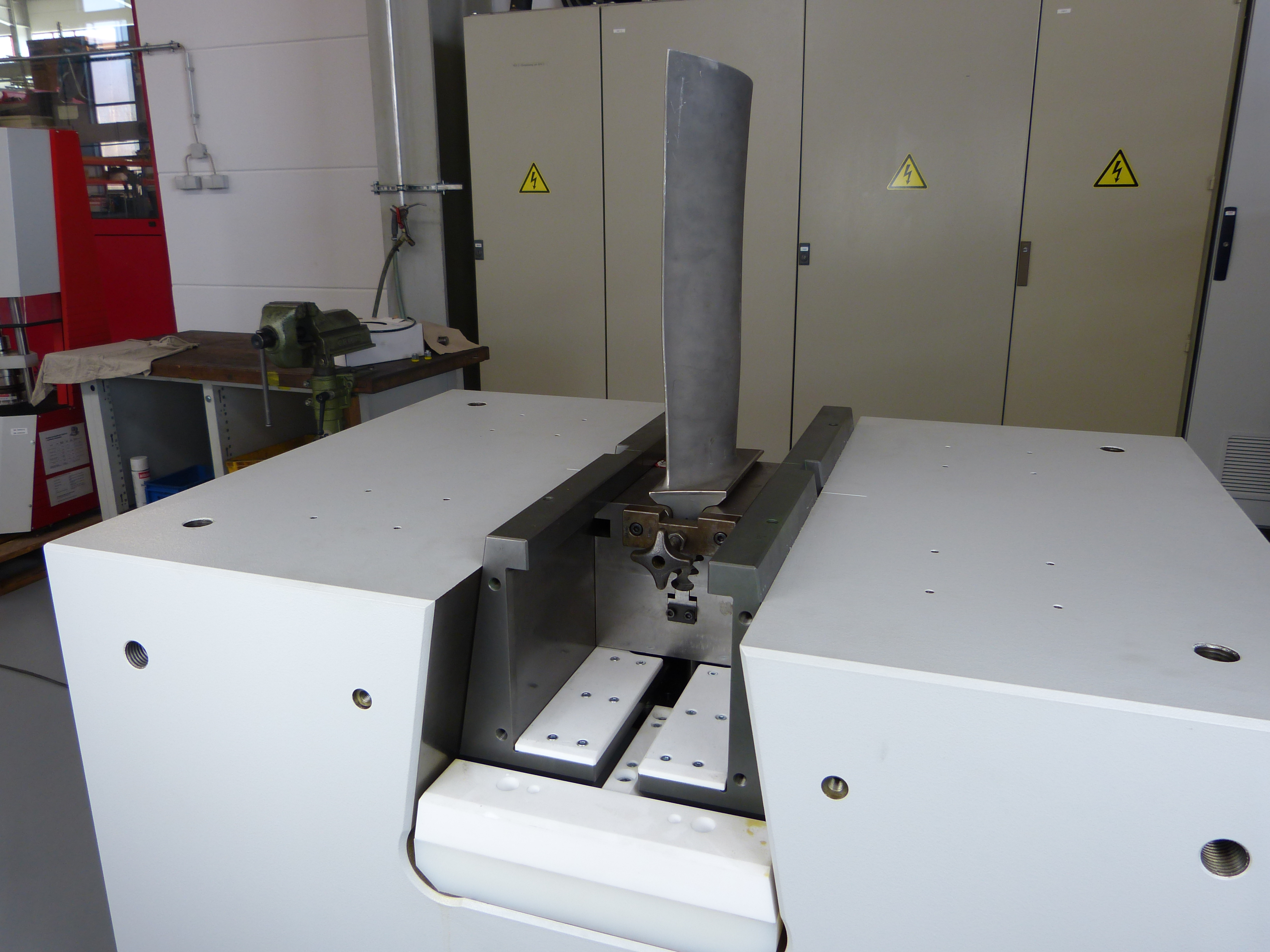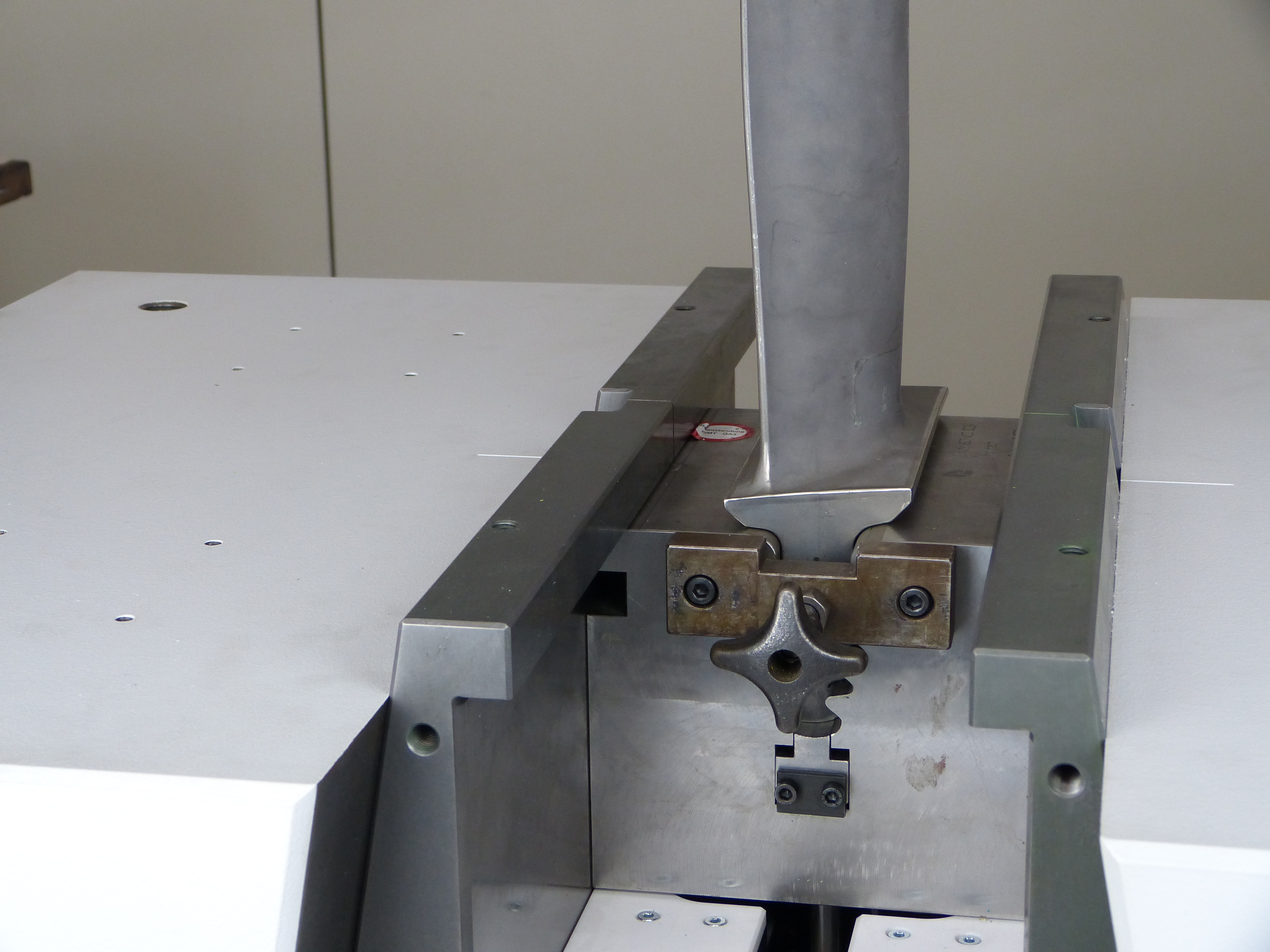Vibration Test Stand | VTS
These test stands are developed for high resolution determining of blade resonances. Especially the influence of the clamping of the blades was minimized to guarantee high repeatability.
Advantages & Innovation
Automated test system for determining natural frequencies and damping
Test procedure according to company internal standards
Cost and time savings due to low personnel costs
Scalable for different blade types and sizes
Software-controlled component clamping using hydraulics
Different clamping blocks depending on blade size
Excitation by automatic modal hammer
One click reporting
Blade database
Easy to use
Export to Excel, ASCII or SAP
Vibration measurement with Laser Doppler Vibrometer, accelerometer or microphone
Frequency range up to 100 kHz
Frequency resolution < 1Hz at 20 kHz
Project-oriented database structure
SQL database for multiple workstations
Vibration measurement with Laser Doppler Vibrometer, accelerometer or microphone
Applications & Integrations
Component tests for gas and steam turbines
Component testing of aircraft engines
Turbine blades, compressor blades
Compound material components
blade refurbishment
Quality Control
Series testing
Research and Development
Model updating
Experimental modal analysis
Cost and time reduction
By easing the operation of the software and a high safety level it is possible that normal workers can do the measurements of the test objects. This leads to a reduction of costs and enables the test in the production line. The deviations from the tolerances are detected very early and bad parts can be sorted out. To reach this goal the automation of the following steps was done:
Hydraulic clamping
Automatic resonance determination
Test piece management (Blade database)
With this support a measurement is done with a few mouse clicks.
Measurement
The blade is excitated with an impact hammer and the vibration answer is measured with a microphone or a laser. A high precise data acquisition system ensures the accuracy of the measurement.
Software
The main focus during the development was to create an easy to use and very functional software. The result is a program that can be used for nearly every quality test. The following key features are available:
Sequential measurements (including master blade measurements)
Determining the mode shapes
R&D test measurements
Sequence management
With this support a measurement is done with a few mouse clicks.
Test item management (Blade management)
Analysis & reportsr
User & right management
All setups and measurement data are saved in an local data base, but can also be stored on an main server. The export to Excel or SAP is implemented and with the “Office-Function” it is possible to setup the parameter or define or edit the test sequences form the office PC via the network.
Standard Teststand
Maul-Theet offers three different standard configurations for determining the natural frequencies. In addition, inputs for pressure and temperature measurement are available.
1. VTS with customers own hydraulics
This solution includes all the equipment needed for vibration measurement (modal hammer, sensors, data acquisition) and a PC with software. If the component is clamped in the customer’s own clamping device, an automatic determination of the resonance frequencies can be started. Optionally, a specified clamping force can be checked and documented via a pressure sensor. The results and measurement data can be saved and reports can be created.
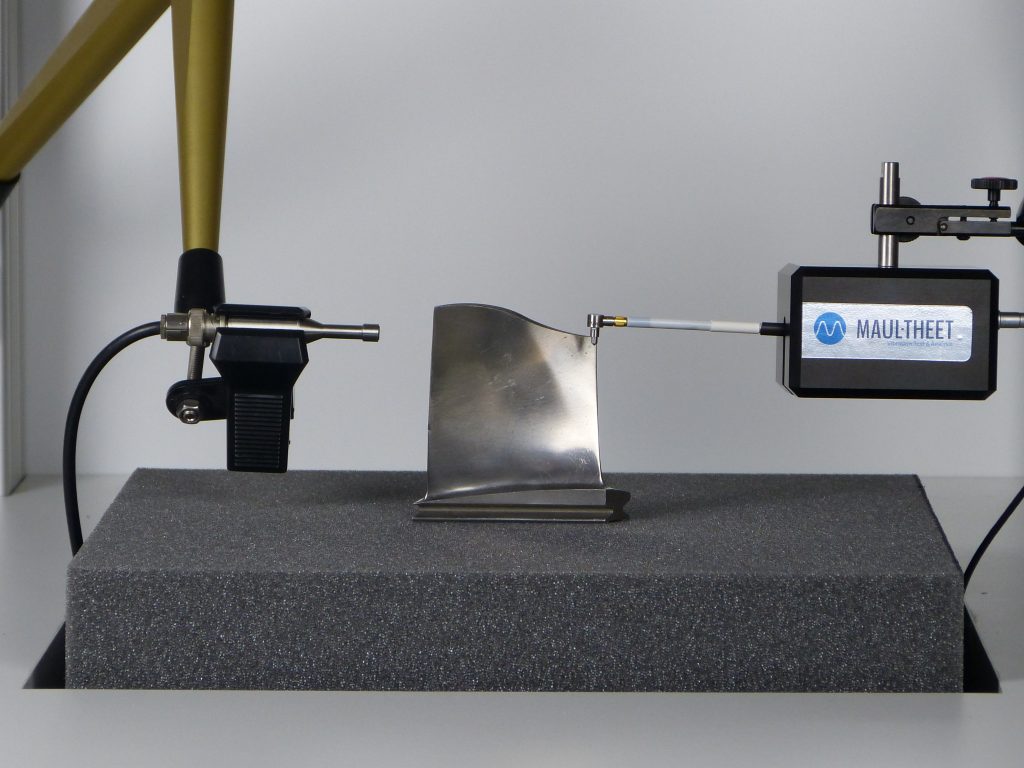
2. VTS with manual hydraulics
This solution includes a manually operated hydraulic unit. It is integrated in a test bench made of aluminum profiles, which also houses the clamping unit. The design of the test bench can be adapted to the customer’s application. The clamping force can be adjusted via a toggle switch. It is possible to measure the clamping force with the VTS controller and display it in the VTS software. For clamping forces outside the permissible range, the vibration measurement is automatically blocked by the VTS software.
3. VTS with PLC controlled hydraulics
This solution has a PLC control of the hydraulic unit. The PLC controls the proportional valves to preload, tension and control the clamping force during vibration measurement. The pressure accumulators ensure that the clamping forces remain stable for up to 20 minutes without pump operation during experimental measurements. With PLC-controlled hydraulic clamping forces of up to 650 kN are possible.
VTS test stand configurator
| Teststand | Excitation | Clamping | Vibration Sensor | Monitoring Sensor |
|---|---|---|---|---|
| VTS with customer hydraulics | Hammer without force cell | Customers own clamping | Microphone | Clamping pressure (optional) |
| Hammer with force cell | Laser (LDV) | Temperature (optional) | ||
| Automatic hammer | accelerometer | |||
| VTS with manually hydraulic | Hammer without force cell | Hydraulic manually controlled | Microphone | Clamping pressure included |
| Hammer with force cell | Laser (LDV) | Temperature (optional) | ||
| Automatic hammer | accelerometer | |||
| VTS with PLC controlled hydraulic | Hammer without force cell | Hydraulic controlled by PLC | Microphone | Clamping pressure included |
| Hammer with force cell | Laser (LDV) | Temperature (optional) | ||
| Automatic hammer | accelerometer |


